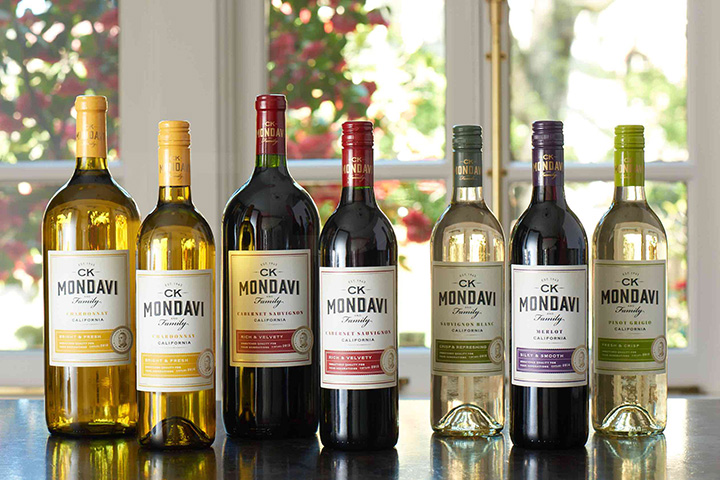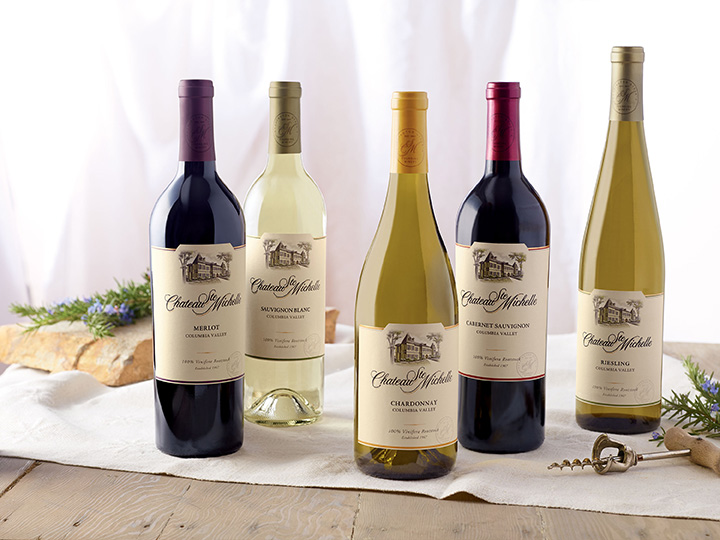The coming year’s forecast looks rosy for American wine retailers and American vintners alike.
Stability in the U.S. economy and favorable demographic trends are currently pointing toward continued growth in wine sales in 2017, so the industry looks likely to build on gains made in recent years.
On the pricing front, consumers are continuing to trade up in 2017. While more than 80% of wine category volume still occurs below $10 at retail, national data shows that consumers are increasingly seeking more premium offerings, and the most significant growth in the first two quarters of this years is occurring above $10 a bottle.
Most retailers across the country have felt this “premiumization” trend. At Oliver T’s Market in Grand Blanc, Michigan, partner and wine buyer Chris Capoccia remembers that he used to ask every customer about their budget as a starting point. “When we started, I’d ask if $15 was too much and for a while that was a line in the sand. Nowadays, it’s frequently the case that $20 isn’t too much and often $30 isn’t either.”
Those spending more are still looking for certain quality factors in his view – noble grapes or top appellations – but he notes less reluctance to spend more on local products in particular. “Michigan makes some good wines and people are increasingly open to trying them,” he says. “We’ve doubled our local wine selection in the last 5 years, to what’s now 12 linear feet of six-foot shelving.”
Premiumization isn’t felt equally by all retailers, however. Just one state over Jason Jonas, the general manager at Timer’s Beverage Center in Racine, Wisconsin, says his operation sees more bargain hunting than trading up.
“If anything, what I’m seeing is pushing the other way,” he says, but he’s not sure if that’s entirely a reflection of his customer base. “Our distributors are getting more and more aggressive on price, so we’re still seeing the most sales growth at $6.99.” What he does think is interesting is the swift uptake of low calorie and low carb wines. “Three years ago, we didn’t carry any of these items, but now we have five SKUs and they fly off the shelf.”
As one might expect, these prevailing conditions are leading vintners to aim higher with their new products. Fetzer Vineyards, the company behind Bonterra Organic Vineyards (pictured atop), is a B Corp that’s right on top of many of the hottest trends. One of its newest brands, 1000 Stories, is a super-premium Zinfandel aged in Bourbon barrels that is resonating with whiskey drinkers.
“We continue to innovate across categories, most recently with our highly aromatic Adorada Rosé and Pinot Gris, which launched in select U.S. markets at $18 SRP this summer,” says Fetzer’s vice president of marketing Rodrigo Maturana. “Capitalizing on our depth of expertise in sustainable grape growing, we’ll also introduce a sustainability-minded 1.5-liter bag-in-box wine at the $10 price point. This new brand is partnering with grape growers to help convert their vineyards to certified sustainable farming practices.”
On the other end of the premiumization spectrum, J. Lohr is using the launch of its most expensive wine ever to cement a commitment to the grape that built its business. The new Signature Cabernet Sauvignon from Paso Robles retails for $100 per bottle.
“Cabernet Sauvignon has been the number one driver for us for forty years.” says CEO Steve Lohr, who also serves as Board Chair for the Wine Institute. “Our focus in Paso Robles in recent years has improved the quality of our wines from certain vineyard blocks enough that we felt confident putting our stake in the ground with a truly great wine.”
Not all California vintners are feeling quite as bullish, though. At CK Mondavi, Marc Mondavi agrees that times are good for now, but sounds a note of caution. “Premiumization is happening, but it’s also vulnerable,” he says. “If we get a downturn in the economy, I have no doubt we’ll see a quick reset in consumer behavior and need to readjust our plans accordingly.”
So what do retailers need to know about the state of American wines as they plan for the next year?

Red Blends Remain on the Rise
“Cabernet Sauvignon and Chardonnay are still at the top of the heap, but red blends are next in line,” Mondavi says. “The blend category is still growing, but not at the exponential rates we saw when Merlot or Moscato caught fire. The common factor behind those that catch on seems to be a touch of residual sugar, and that’s true whether we’re talking about a popular $10 wine or a cult Bordeaux blend for $300.”
The president of Kreston Wine & Spirits, a retailer with two bustling locations in Delaware, sees the impact of the red blend trend reaching beyond those sweeter styles moving forward. “I anticipate continued growth in this segment and for growth to move up in price point,” says Bob Kreston. “In part, this is because we’re already seeing higher-end blends like The Prisoner do so well. But it’s also because the younger shoppers cutting their teeth on sweeter blends today will be more open to trying drier blends as their palates evolve, whether that’s Bordeaux blends or Rhône blends.”
The blend craze hasn’t crossed over into white or rosé territory to date, but many companies that have traditionally hung their hat on varietal wines have released new red blends this year, and more are sure to follow. A prime example is the Line 39 brand, recognized in 2016 and 2017 as a Fast Track Growth Brand by the Beverage Information Group. Line 39 built its reputation with varietal wines, but its newest addition that launched in July is the richly-fruited Excursion Red, a blend of Petit Verdot, Petite Sirah, Zinfandel and Merlot.

All Shapes, Sizes and Packaging
The industry’s fastest-growing segment is the premium 3-liter bag-in-box, which has doubled its market share in the United States in the past four years, according to American market research firm Information Resources Inc. This category remains dominated by California wines, but is growing more diverse every year. Kreston has seen enviable growth in the segment over 2016 so far this year and thinks the growing diversity and increase in imports in the mix has helped build trust in the category.
“Yes, California still makes most of these wines, but seeing a New Zealand Sauvignon Blanc or a French Bordeaux just adds credibility,” he says.
As a brand, the category leader Bota Box is growing seven times as fast as the total table wine category, reaching 5 million cases in annual sales in 2016, according to Nielsen.
“The typical Bota consumer drinks $10 and above retail wines,” says Chris Indelicato, president and CEO of Delicato Family Vineyards, the makers of Bota Box. “Boxed wine consumers are becoming increasingly sophisticated when it comes to wine and they know that Bota Box over delivers.” The brand’s newest product is the Bota Box Dry Rosé, launched in April at a SRP of $24.99.
Back in Delaware, Kreston is keeping his eye on a newer innovation in packaging too – aluminum cans. “For now, there’s more suspicion of cans,” he says, “but that’s likely to change in a similar way to what we’ve seen with the boxes over the last ten years. Not only do younger audiences have fewer pre-set notions about bottles and corks, but with craft brewers out there trumpeting cans as being superior to glass, I have no doubt that acceptance will come – and faster than you might think.”
Washington Wines are Riding High
Industry insiders have long known that Washington wines offer great mileage for the dollar, but now the public is catching on too.
“The focus with our Washington wines has always been a commitment to quality,” says Brett Scallan, senior vice president of marketing for Ste. Michelle Wine Estates, whose stable of Washington labels also includes 14 Hands and Columbia Crest. Scallan emphasizes the point by adding, “Quality is the cornerstone of our approach that has fueled both our own growth and the growth of Washington as a whole.”
Jonas in Wisconsin agrees. “Washington is putting out solid wines across the board,” he affirms. “With more wines coming out at higher price points and prominent brands like Charles Smith racking up great scores, our customers have more confidence in the region than ever.”

Dry Rosé and Sparkling
As to what the future holds for new American wines down the road, Kreston expects to see more dry rosés emerge in the premium tier and more sparkling wines under $25, as American vintners scramble to compete on two recent trends that have been led by imports to date – Italian Prosecco and French rosé from Provence.
“Rosé continues to be a big growth story within the wine category – and while it’s doing well on-premise, it’s off-premise where the growth rates have been staggering,” he says. “Usually restaurants set the trends that retail stores then follow, but it seems to be the other way around for this dynamic product segment – perhaps because the distinctive color is so eye-catching.”
Of course, neither sparkling nor dry rosé have been specialties of California, mainly because both styles taste best when made from fruit that’s not fully ripe. So, perhaps these are opportunities for other regions? After all, there are wineries in most of the fifty states, the bulk of whose vineyards have a harder time achieving full ripeness than sunny California.
With the local food trend brightening the outlook for “local wines” around the nation, and with a taste for lighter, brighter wines picking up speed, it’s surely only a matter of time before someone starts making more affordable bubbles. Or premium pink wines that are fully dry and can proudly claim to be made in America.
Author and sommelier Marnie Old is one of the country’s leading wine experts. Formerly the director of wine studies for Manhattan’s esteemed French Culinary Institute, she is best known for her visually engaging books published by DK – the award-winning Wine: A Tasting Course and He Said Beer, She Said Wine.









